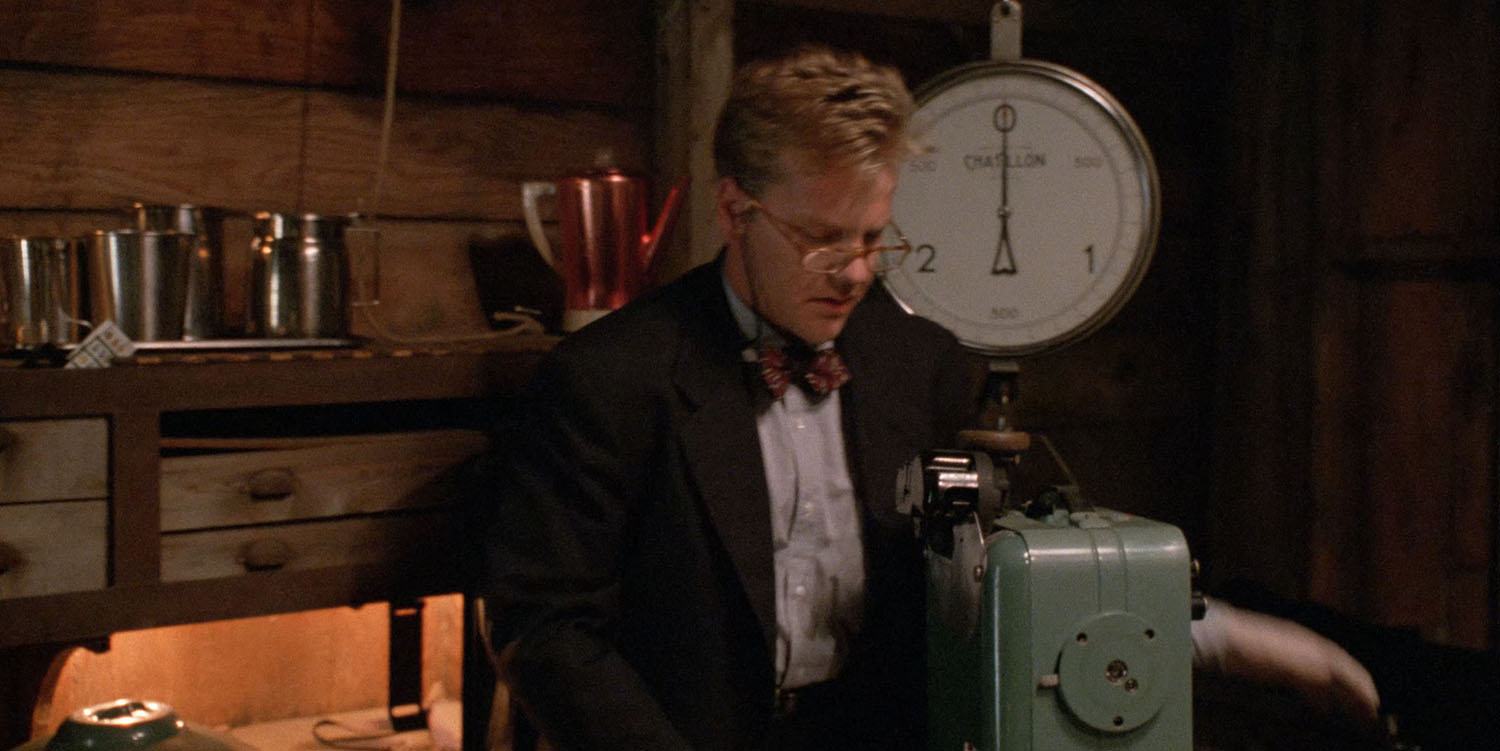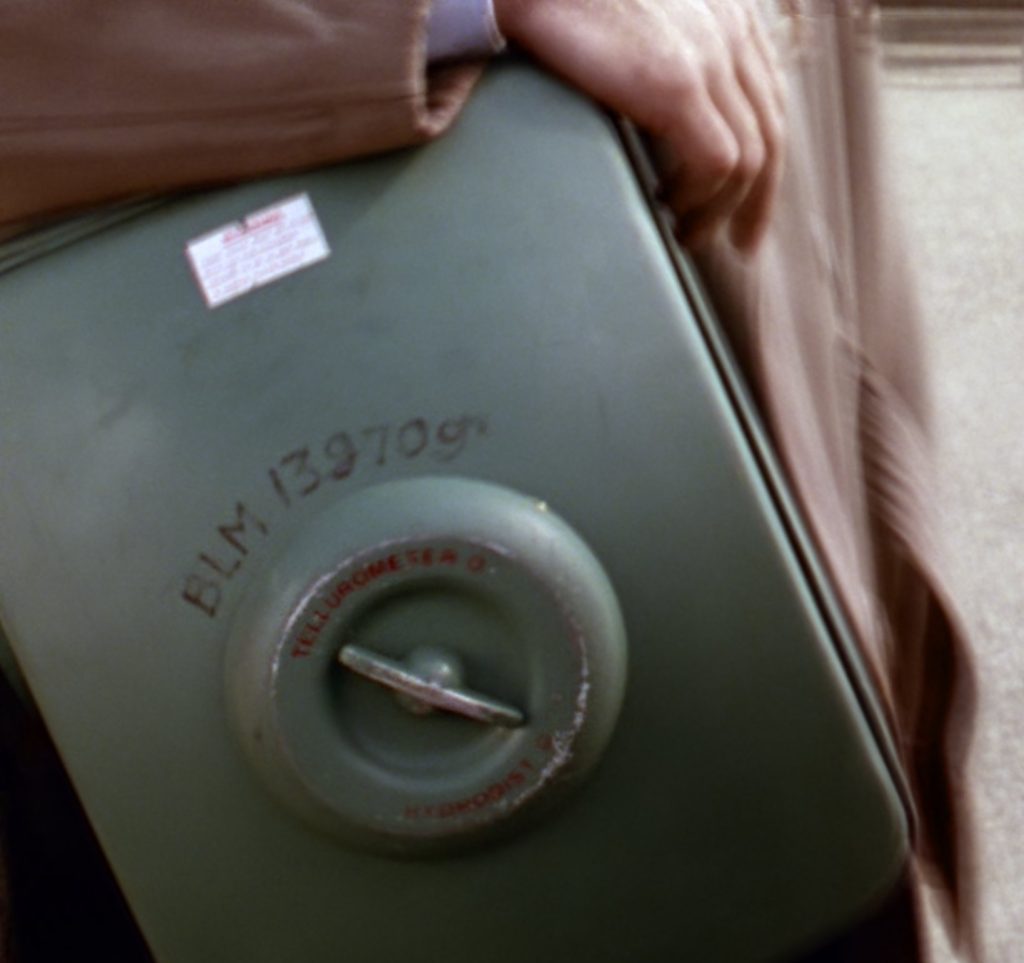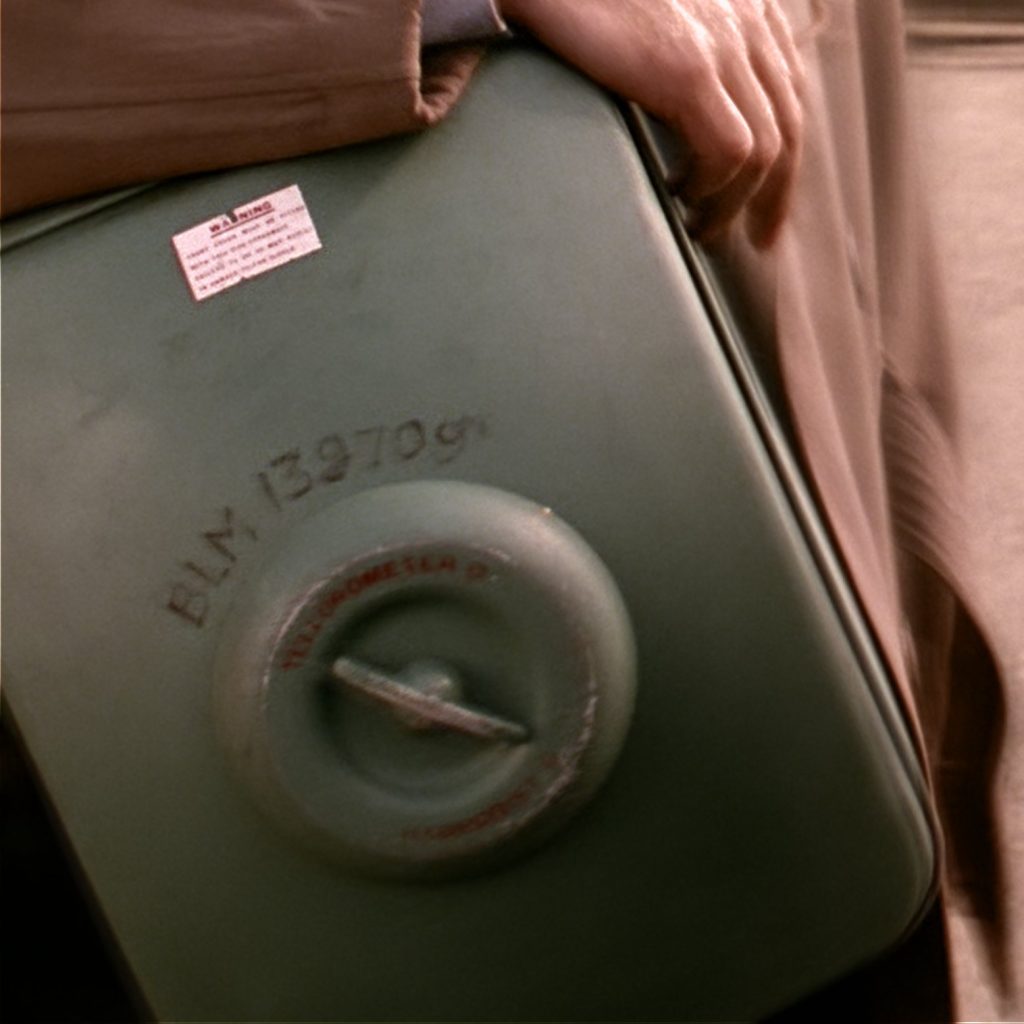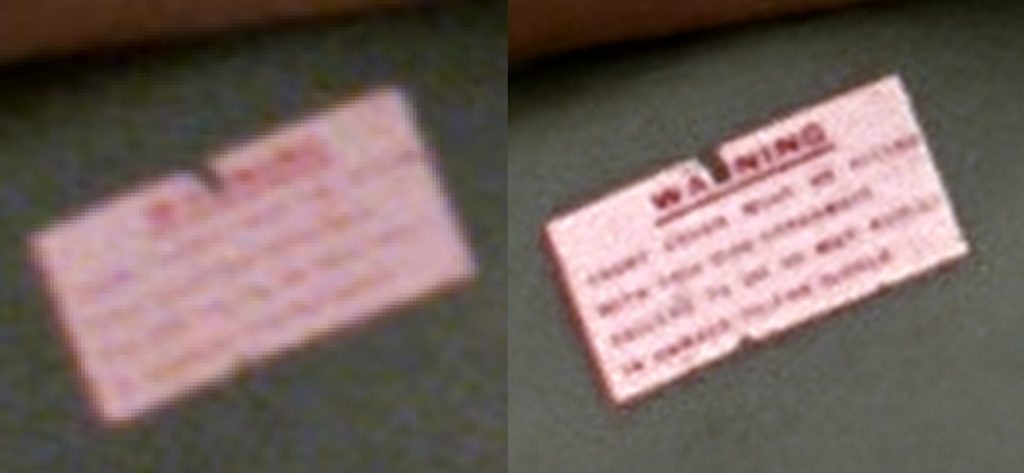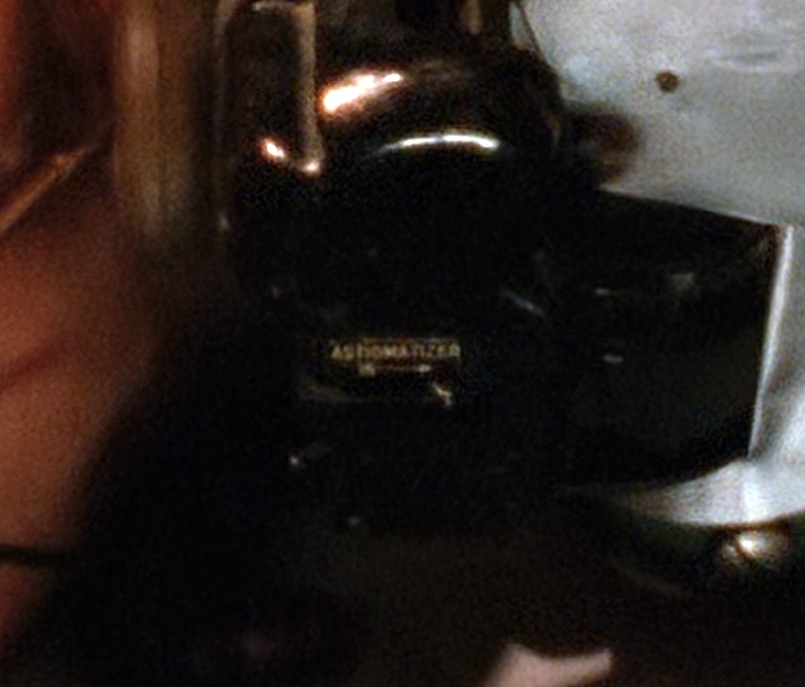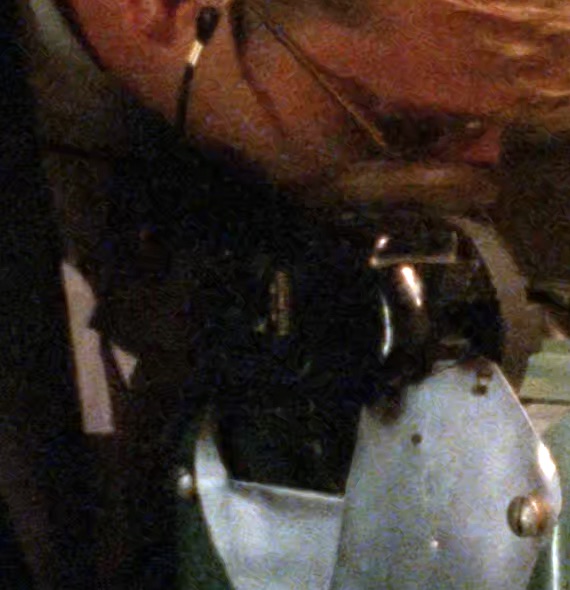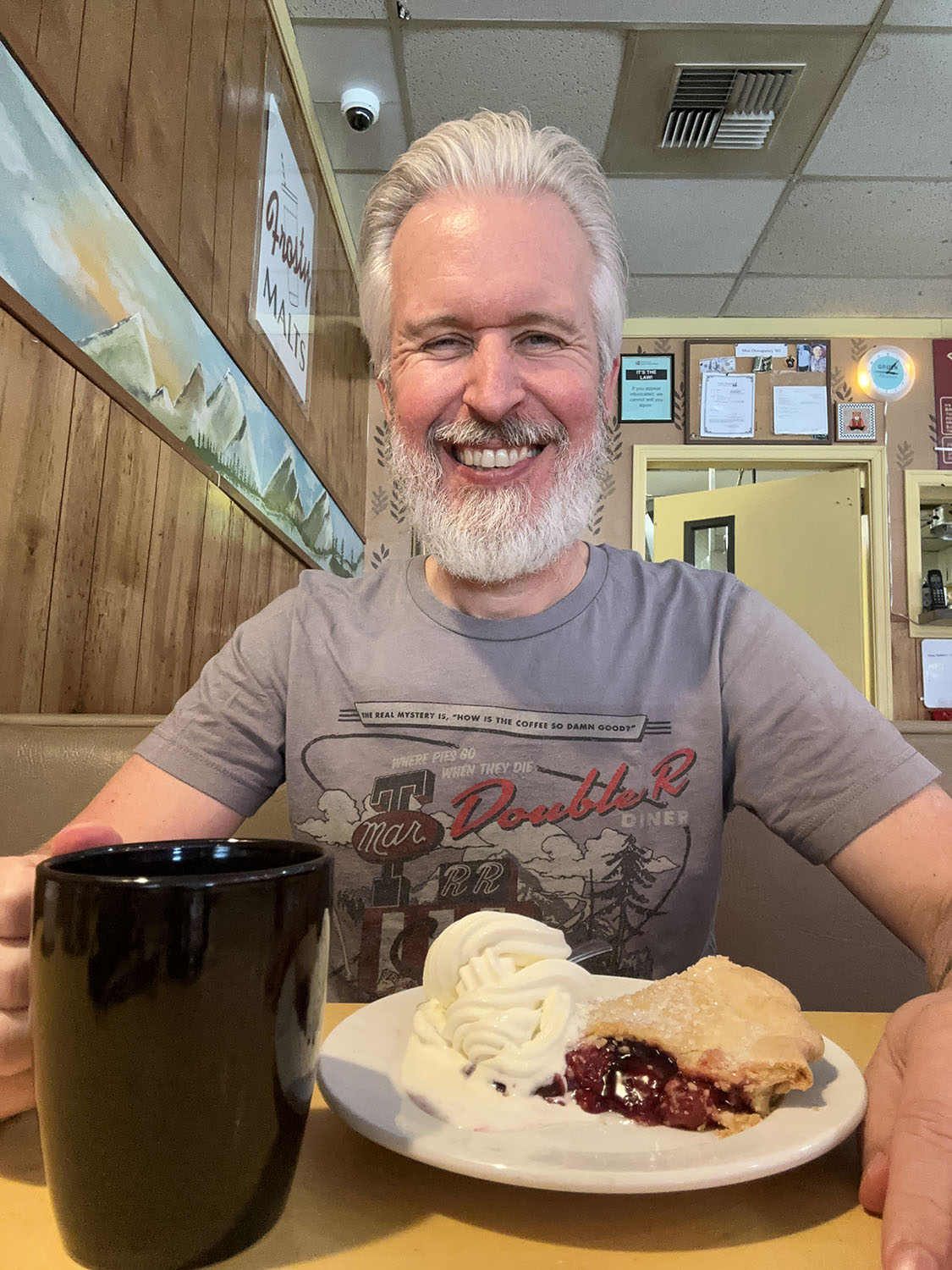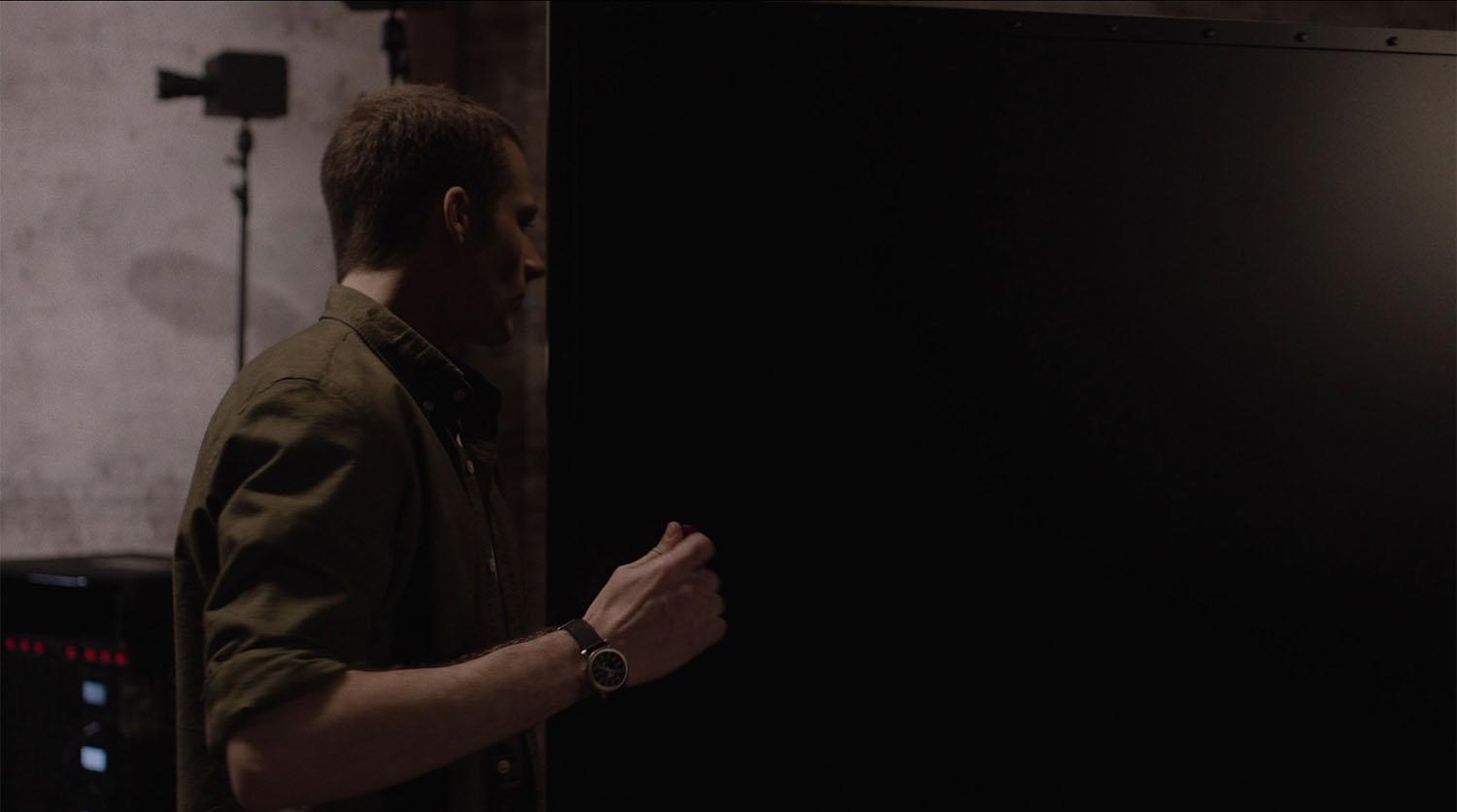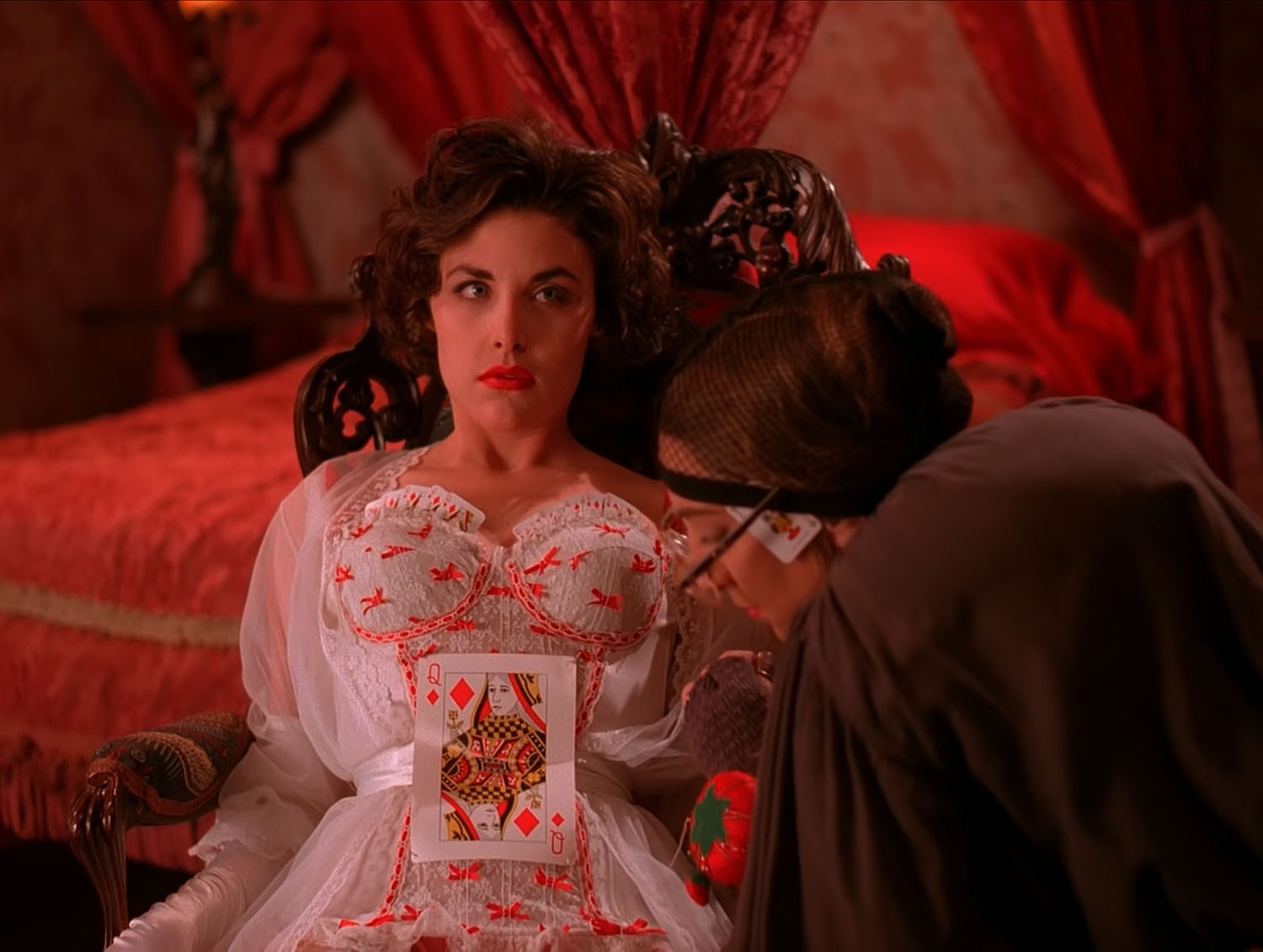I’m still in a state of shock writing this article as one of my “Holy Grails” of Twin Peaks props is now identified thanks to help from fellow Bookhouse Boy Matthew Haywood. For years, I’ve searched for Special Agent Sam Stanley’s “Whiteman instrument” machine seen in David Lynch’s Twin Peaks: Fire Walk With Me. I love Kiefer Sutherland’s character Sam mostly because his name is my initials, he sports bow ties and can find the most obscure things. Identifying the prop he used to crack the Whiteman case and later used to find a “T” under Teresa Banks’ fingernail alluded me. Thanks to the recent German 4K transfer of Lynch’s 1992 masterpiece, Matthew found a brand name on Agent Stanley’s green case which resulted in figuring out how this prop was created.
FINDING AGENT SAM STANLEY’S WHITEMAN INSTRUMENT MACHINE
On December 12, 2024, Twin Peaks: Fire Walk With Me was released in Germany on 4K Ultra HD Blu-ray. This release had been planned for a few years, and considering I’m writing this article about a prop I’ve longed to identify, it was worth the wait. The clarity and details in many of the scenes provide a fresh new look to my favorite David Lynch film.
Matthew Haywood’s previous tips helped me write stories about the Dead Guy in Carrie Page’s house and the textbook Laura Palmer carries throughout the feature film. This time, he recalled hearing a recent Twin Peaks Roundtable conversation hosted by TP Grammar on YouTube. During this nearly three-hour chat with fellow Twin Peaks fans, I mentioned how Agent Stanley’s machine was on my “Holy Grail” list of things to find.
“In 4K, the word Tellurometer on top was legible when skipping between frames to account for the film grain,” shared Matthew. “It’s crazy that the info was in plain sight the whole time, just illegible. I’ve gone down lots of rabbit holes trying to find what it might be before. I doubt I’d have ever found it that way as I’d never even heard of Tellurometers before tonight!”
Matthew had difficulties at first identifying the word along the circle’s bottom. He turned to image frame averaging and image processing to get an answer.
“I take lots of frames from the Blu-ray, use software to align the images based on ‘alignment points’ that I add that the software can motion track,” explained Matthew. “Then I ‘stack them’, which is the same as adding each one as a new layer set to 50% opacity. This averages them out so that the noise/film grain is eliminated.
After this, I resample the image using a Lanczos algorithm to increase the resolution by 2x. This stacked image is then saved as a lossless 16-bit image that I’ll sharpen (or use wavelet based sharpening) and process with levels, often processing the RGB channels individually for better results.”
The warning sticker image above shows the sticker before Matthew’s stacking technique and the after results. When asked where he learned this process, he turned to the heavens.
I learned this process following some attempts at amateur astrophotography,” continued Matthew. “The technique is used for deep sky imaging to increase exposure time and detail and to reduce noise. It’s also used for planetary objects but things can deviate a little there.”
Thankfully, his imaging tools revealed the complete description – TELLUROMETER / HYDRODIST. I’d soon discover the “BLM 139709” handwritten code stood for the Bureau of Land Management (BLM) and the numbers are most likely a catalog or item number.
This information unlocked everything needed to identify the prop that was manufactured by either Property Master Daniel Kuttner or the Property Assistant Cecil K. Merritt, Jr. for Lynch’s feature film. They probably picked up the Tellurometer at a surplus sale of government property.
WHAT IS A TELLUROMETER HYDROIST?
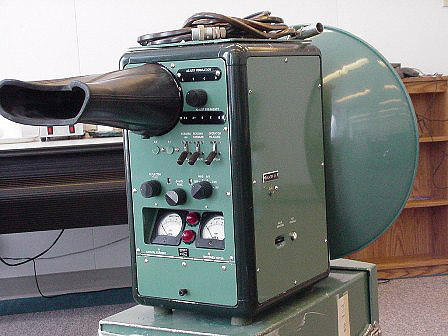
If you are not involved with surveying and mapping, you may have never heard of a Tellurometer. In short, it’s a surveying instrument that uses microwaves to measure distance. The machine works by measuring the time it takes for reflected microwaves to travel back and forth. Tellurometers were the first successful electronic distance measurement (EDM) equipment that used microwaves.
According to the Smithsonian, the first microwave EDM was invented by Col. Harry A. Baumann of the South African Trigonometrical Survey, developed by Trevor Lloyd Wadley of the Telecommunications Research Laboratory of the South African Council for Scientific and Industrial Research (CSIR), and manufactured by Tellurometer Pty. Ltd. in Cape Town, South Africa.
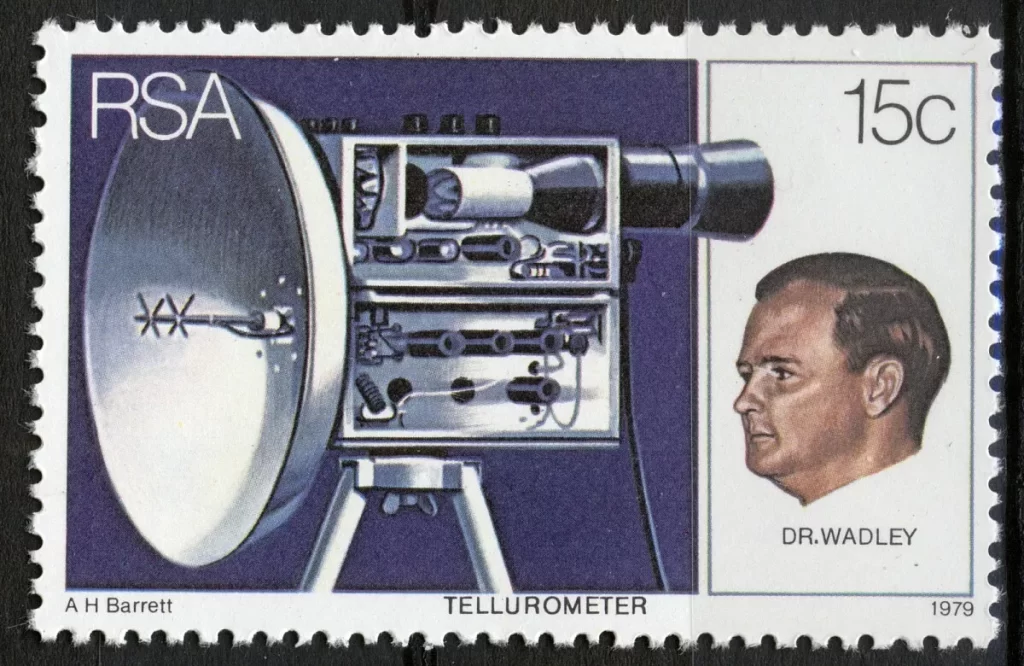
In 1957, Dr. Wadley introduced the Micro-Distancer M/RA-1 as scientists were searching for an instrument that was “lightweight and portable, required a small amount of power, and was accurate over several miles.”
Born in 1920, Wadley was the seventh of ten children of a former Mayor of Durban. He graduated in Electrical Engineering from Natal University in 1940. During the Second World War, he served in the Special Signals Services of the South African Corps of Signals where he was involved in various secret activities. After the War, he joined the National Institute for Telecommunication Research (N.I.T.R.) as a designer of radio equipment.
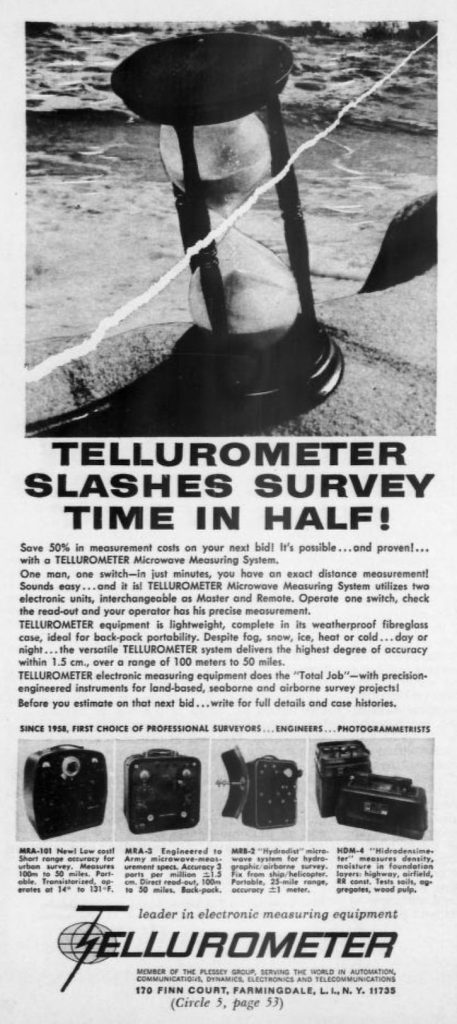
By 1958, Tellurometer was a leading company of electronic measuring equipment with an office in Farmingdale, New York. Two years later, they introduced the MRB Hydrodist system instruments.
The term “Hydrodist” was an acronym derived from “Hydrographic Distance” measurement. These instruments were used for hydrographic survey applications such as a fixed land-based instrument and a ship-based mobile instrument.
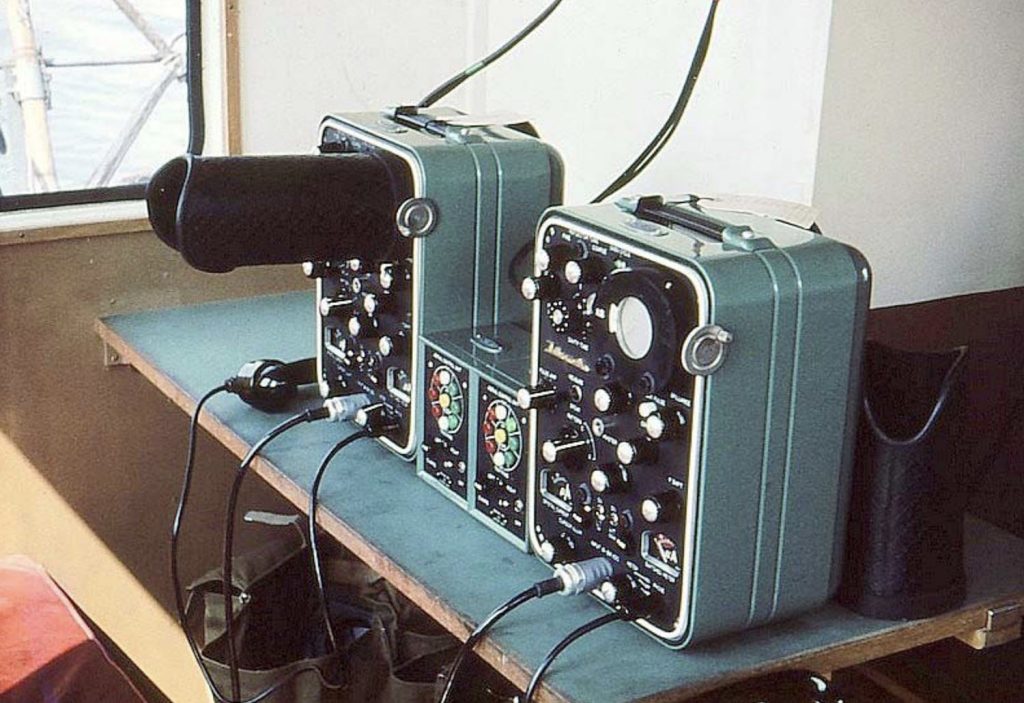
Around 1961, the United States Geological Survey developed an airborne control survey system that used a hovering helicopter with ground-based MRB2 (Hydrodist) master units and theodolites (a precision instrument that measures angles in the horizontal and vertical planes) to establish survey control at points in difficult-to-access terrain. This system was used extensively when surveying Alaska between 1963-1966.
Take a closer look at the machine on the right. Does it seem familiar?
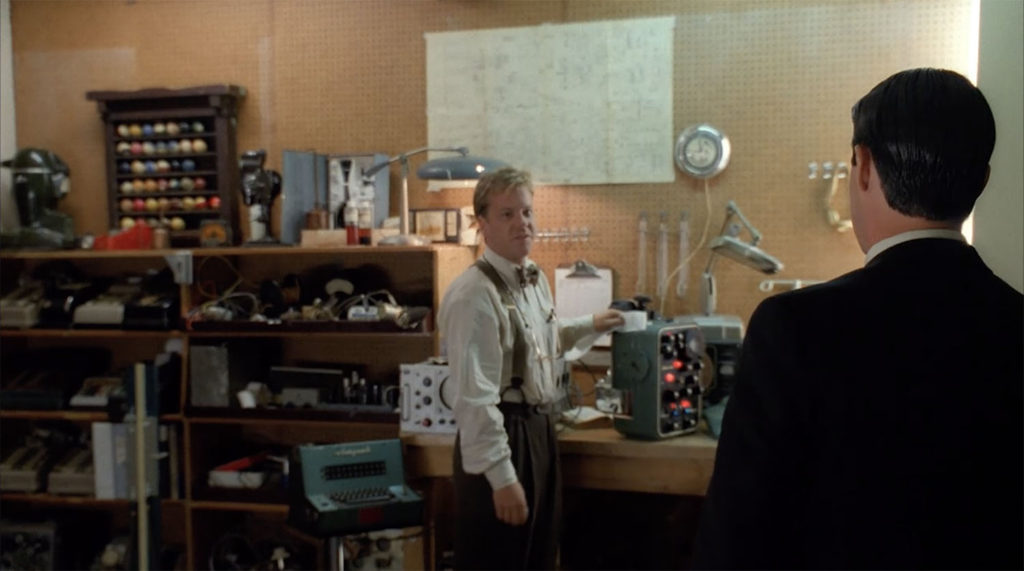
This would be the same base unit used for Agent Stanley’s machine. The red lights may have been added by the prop team as I’ve not found a field version that is illuminated. The prop team would make several additional modifications to the MRB-2 Tellurometer Hydroist which we will now examine.
EXAMINING AGENT SAM STANLEY’S WHITEMAN INSTRUMENT
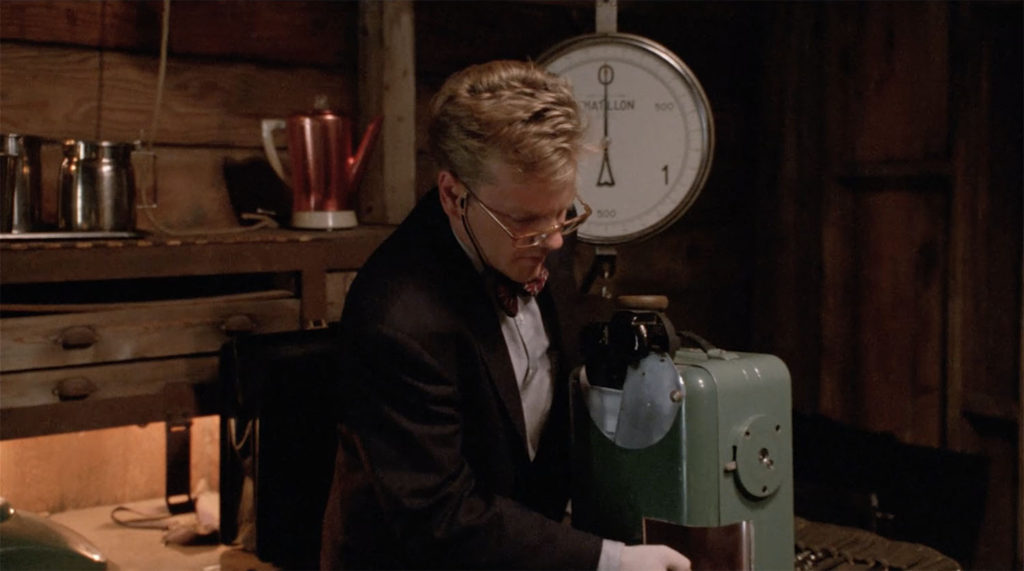
The side of Agent Stanley’s machine contains a round circle which I thought was used to mount the machine on a tripod.
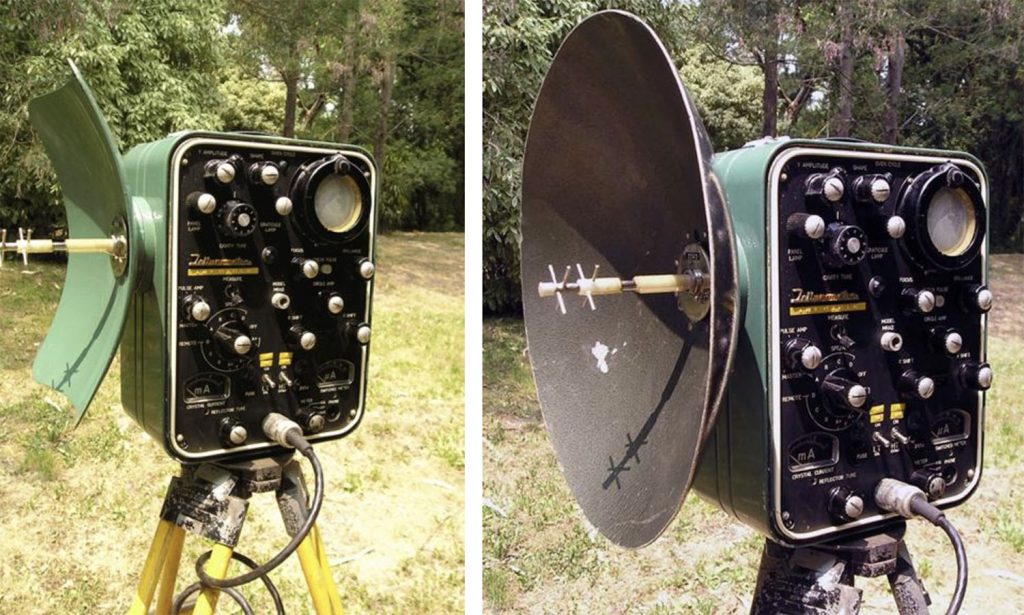
As it turns out, the circle was used to mount the radar dish to the side of the Tellurometer which is best seen in these MRA-2 Tellurometer system images (the land-based equivalent of Agent Stanley’s marine version).
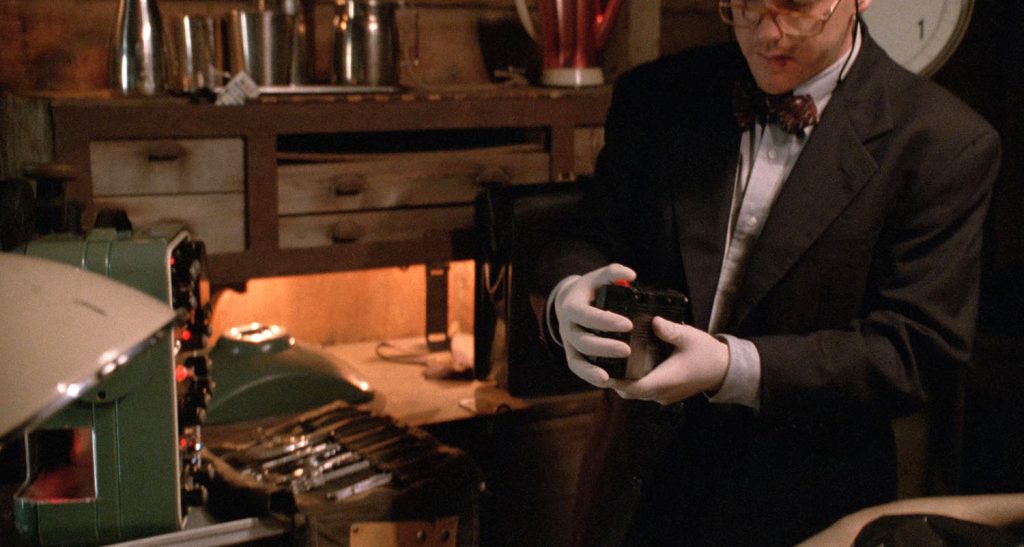
You’ll also notice there is a cutout section in the back of the machine. A red light illuminates silver metal plating which doesn’t appear on an actual MRB-2 unit. This is why I believe the prop team added lights to the front of the unit and one for the back. Red is a wonderful complementary color to green and the lights give the appearance the machine does more than what it was designed to do.
The machine’s cover with the “BLM” code is found on the workbench behind Agent Stanley.
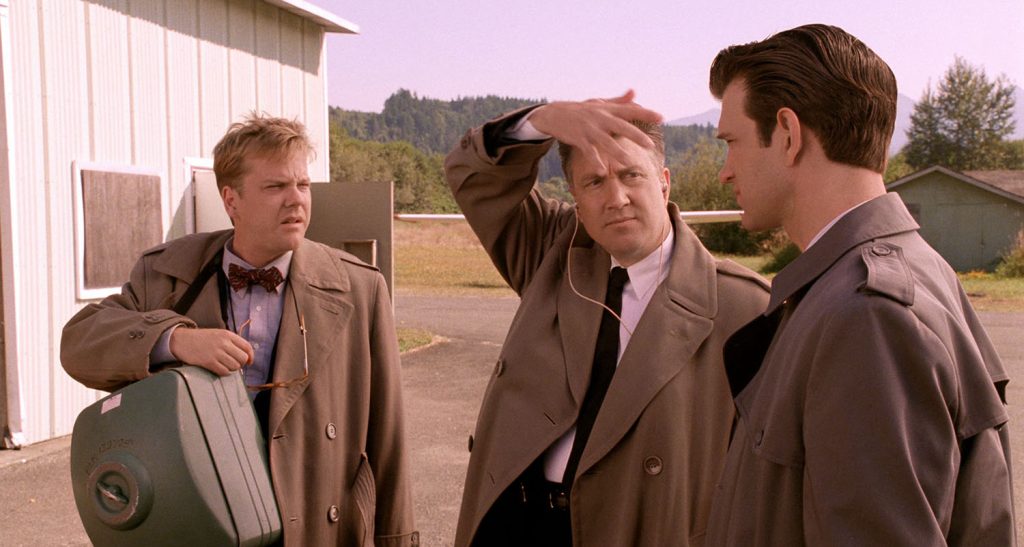
The cover contains a screw used to keep the lid attached – quite helpful in water settings to ensure the equipment isn’t damaged.
AGENT SAM STANLEY’S WHITEMAN INSTRUMENT BUBBLE SEXTANT
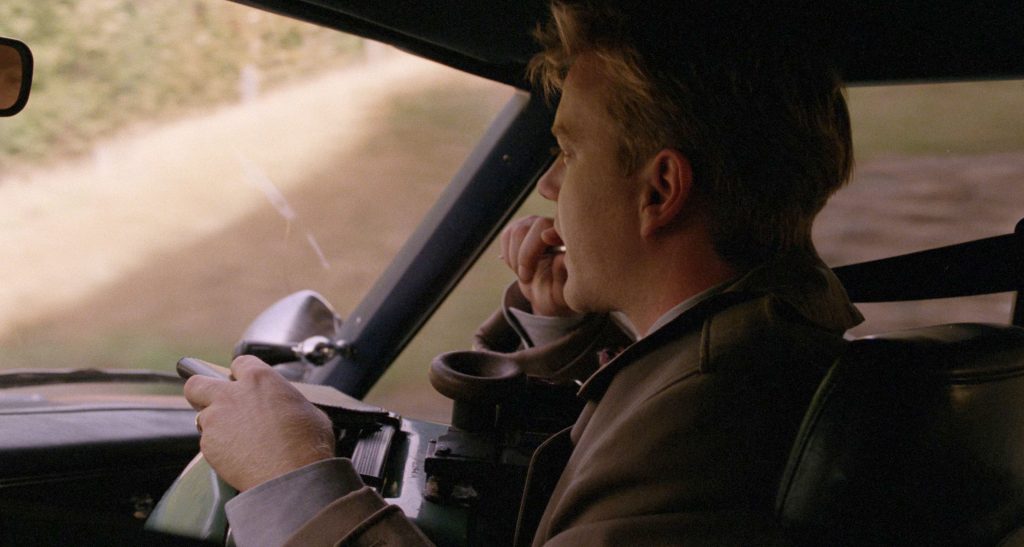
While Agents Stanley and Desmond drive to Deer Meadow, Washington, we catch a few glimpses of the view finder attached to the top of the machine. The actual Tellurometer doesn’t have such a thing mounted to the top so I assumed it was attached.
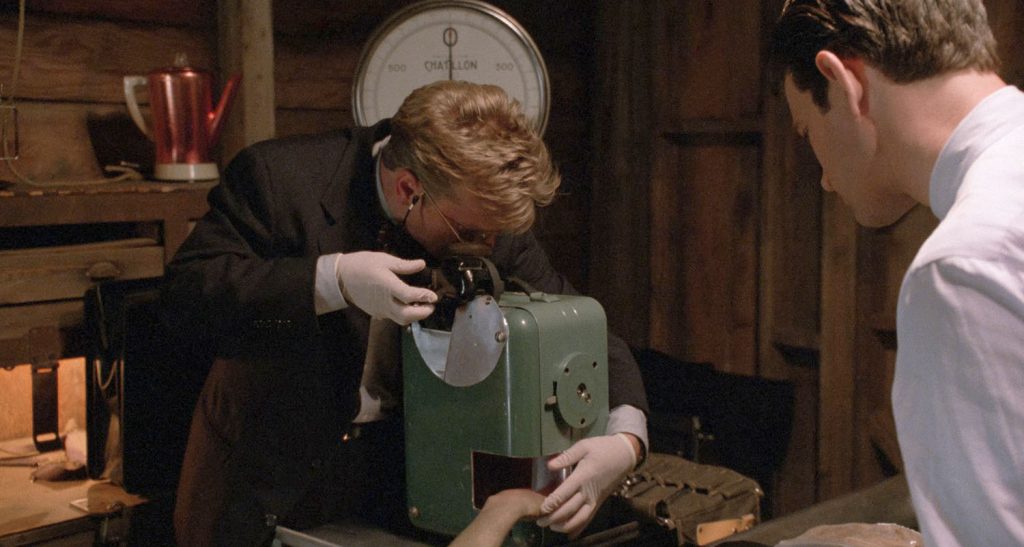
When Stanley looks down at Teresa Banks’ hand at the Deer Meadow Sheriff Department’s morgue, we can see round silver plating added to the back of the unit. The cut out where Banks’ hand is placed is also very visible in this shot. It clearly looks like the prop team attached the view finder which I would soon discover is a Bubble Sextant.
Matthew reviewed the scene where Stanley leans into the machine. He rotated and enhanced the 4K image to reveal a word. We both thought it was “Astromatizer” yet internet searches only returned results for “Atomizer.”
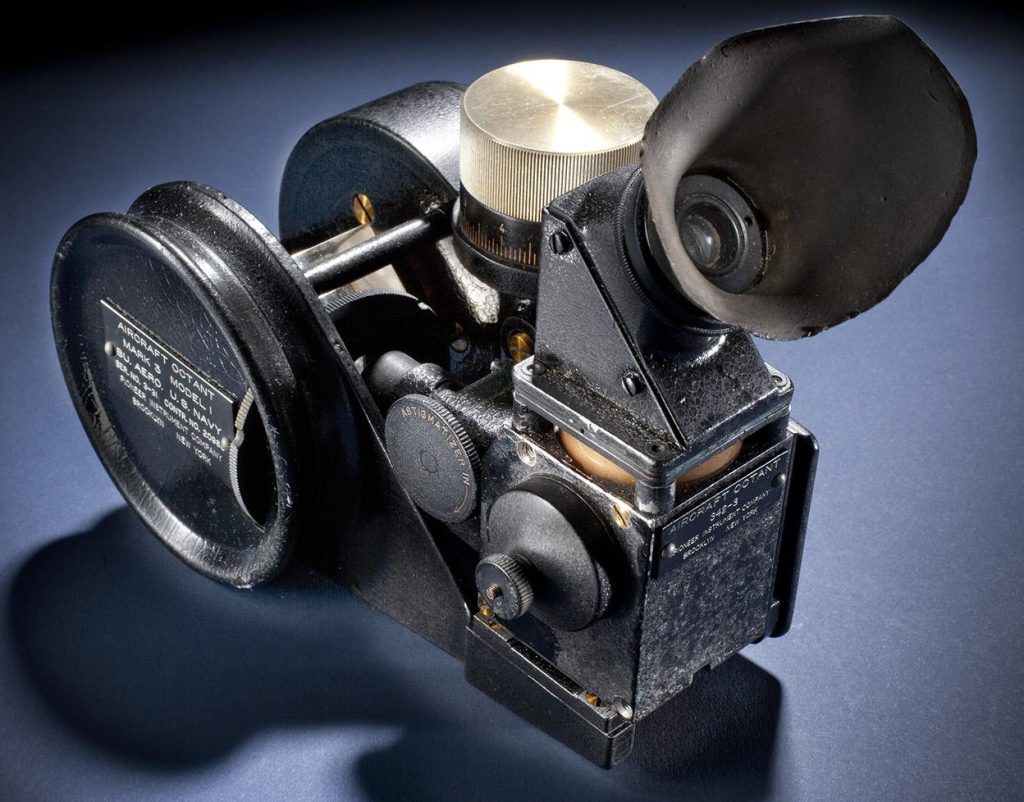
I turned to Kagi.com, a powerful search engine that cuts out ads and sponsored links, to search the word “Astromitizer” one more time. On the second results page, I found link to a 2017 Blogspot article containing this image of a Pioneer Mark-3 Model-1 Aircraft Octant. In the center of this machine was the clue that unlocked finding Stanley’s machine item. The word wasn’t “Astromitizer” but “Astigmatizer!”
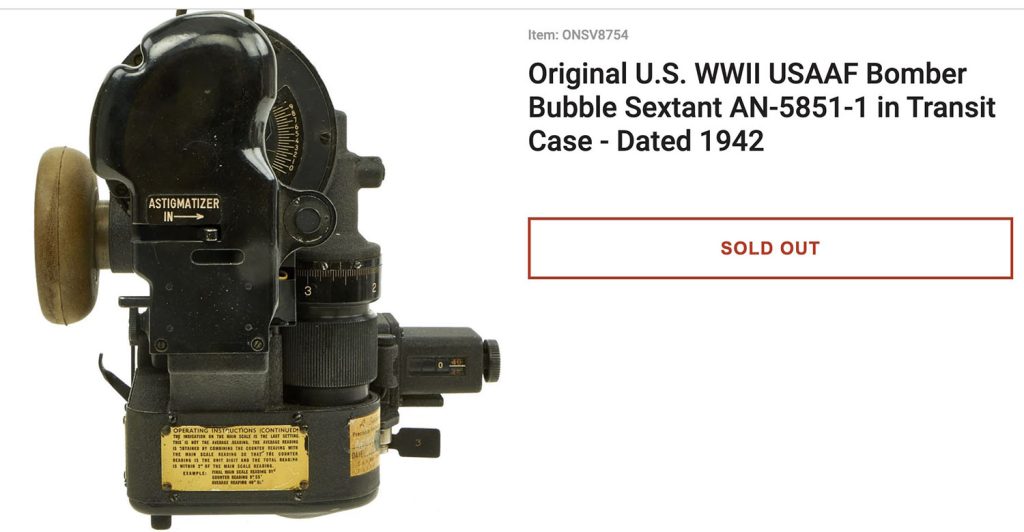
Using the newly discovered word, I returned to Kagi and searched “Astigmatizer Viewer Lens” – a hit appeared immediately! The view finder appears to be a United States Air Force Bomber Bubble Sextant AN-5851 from around 1942-1945.
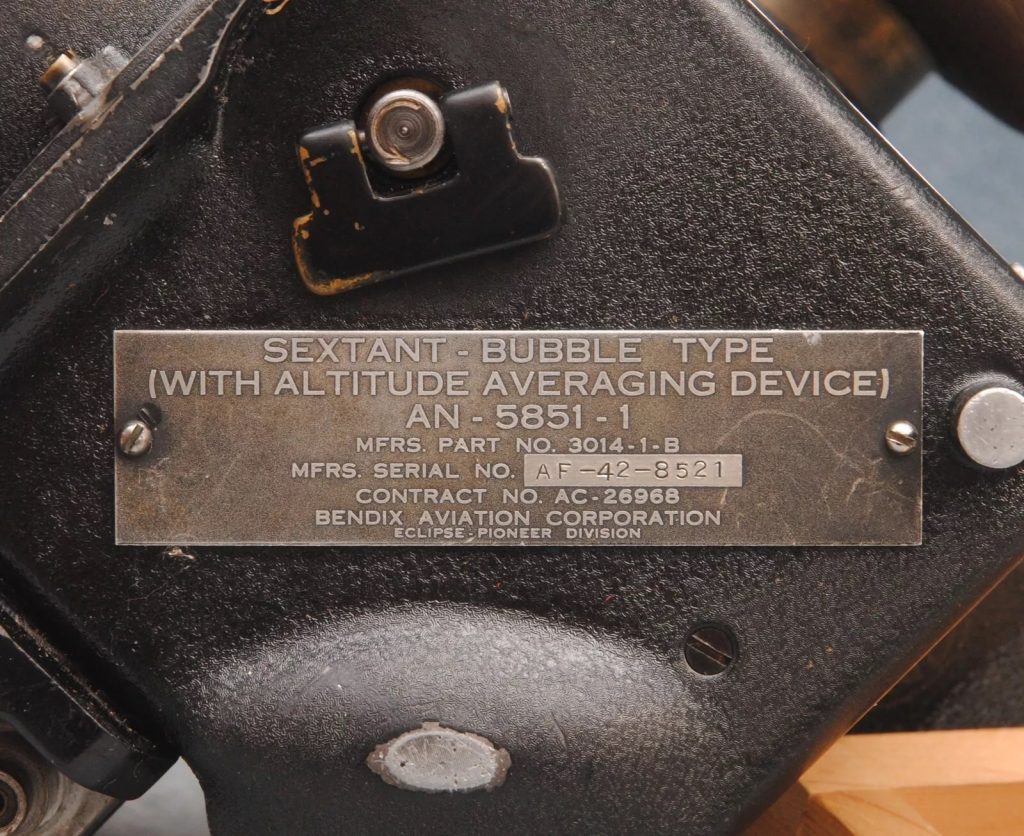
The Bubble Sextant was manufactured by the Bendix Aviation Corporation, Eclipse Pioneer Division. I found multiple versions with the AN-5851-1 code. There is also an unit with an AN-5854 code in the National Air and Space Museum yet it appears similar to the 5851 unit.
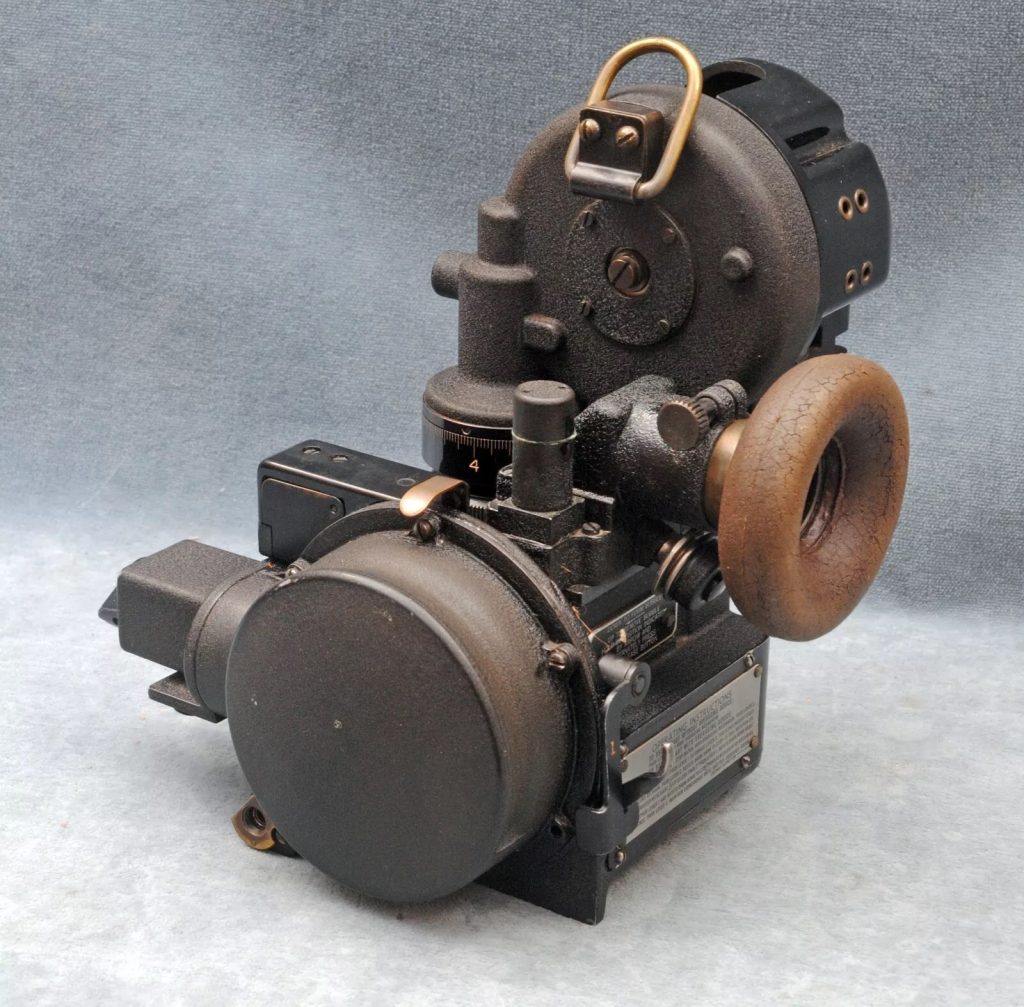
A bubble sextant is a navigational tool that uses the bubble within its chamber to establish a horizontal reference plane.
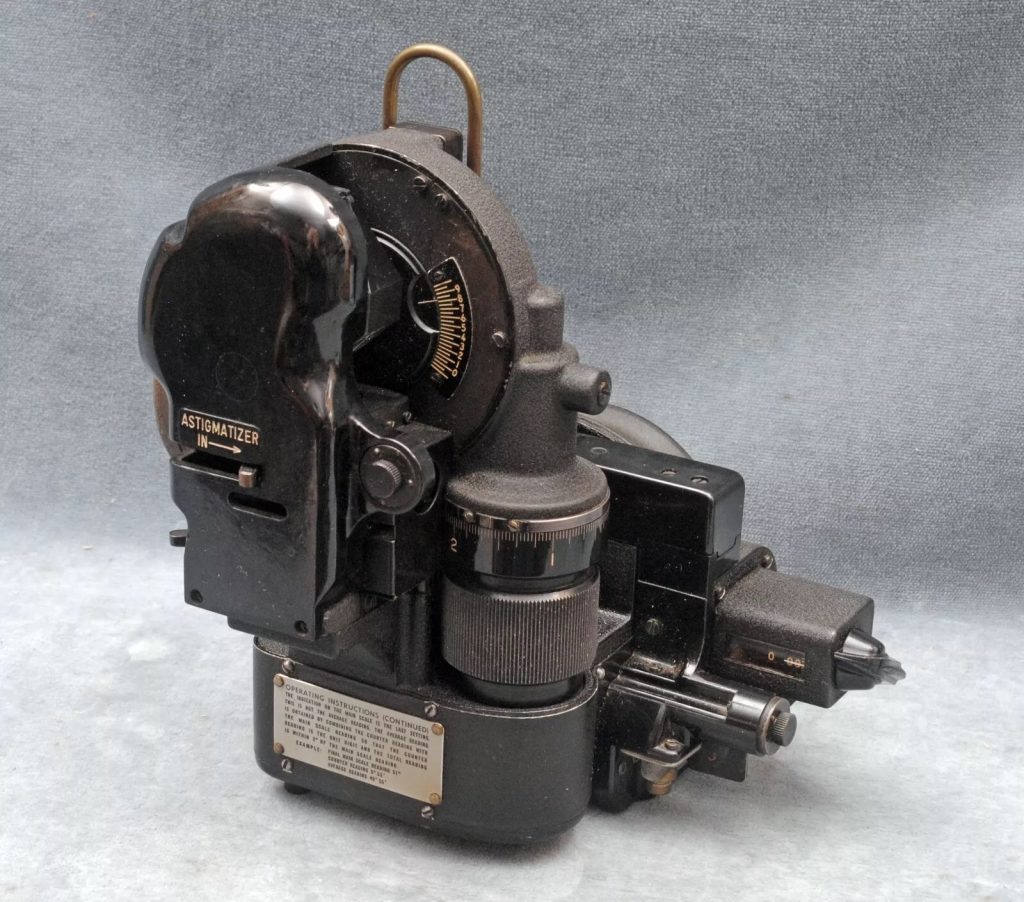
Agent Stanley appears to press buttons which were most likely still available on the top of the unit. The prop team must have disassembled the complete sextant to attach it to the Tellurometer base. Notice the “Astigmatizer In” label printed on the side.
You can see the same label rotated on the actual unit when Agent Stanley looks at Teresa’s fingers while at the morgue.
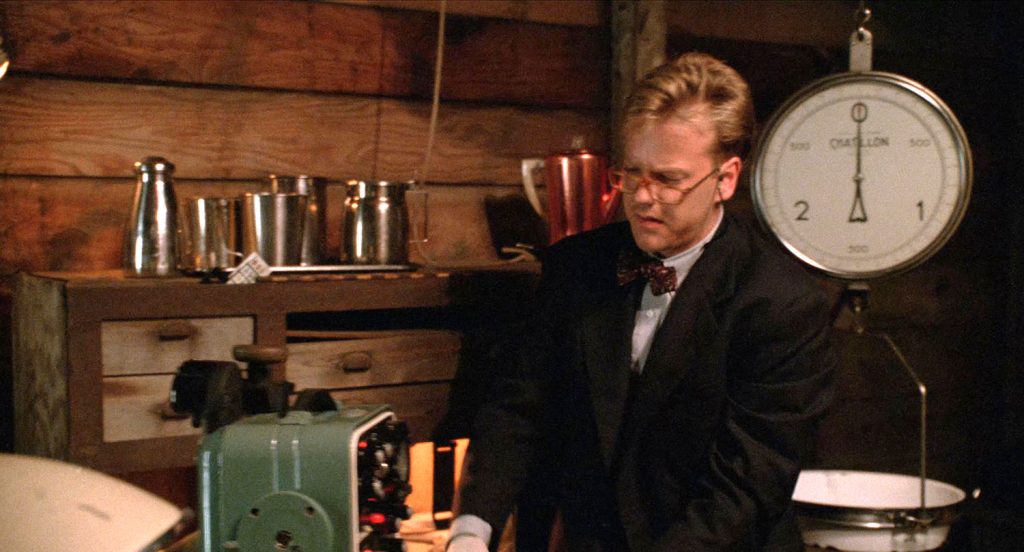
It really does look like the crew cut off the bottom portion of the Bubble Sextant in order to attach it to the base unit. With
APPEARANCES OF “WHITEMAN INSTRUMENT” IN TWIN PEAKS: FIRE WALK WITH ME
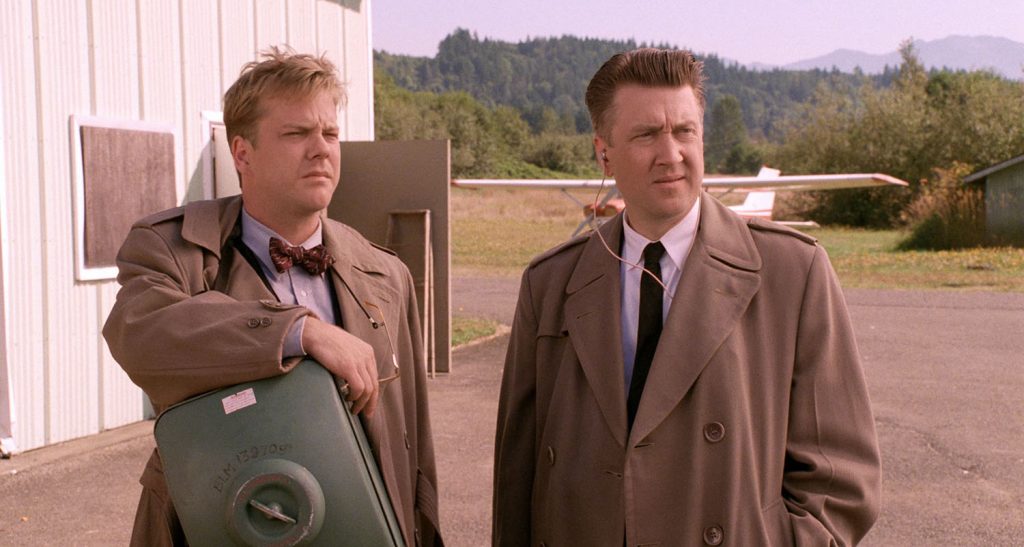
The first time we see Agent Sam Stanley’s Whiteman Instrument machine is at the Private Portland Airport when Regional Bureau Chief Gordon Cole and he are waiting for Special Agent Chet Desmond to arrive.
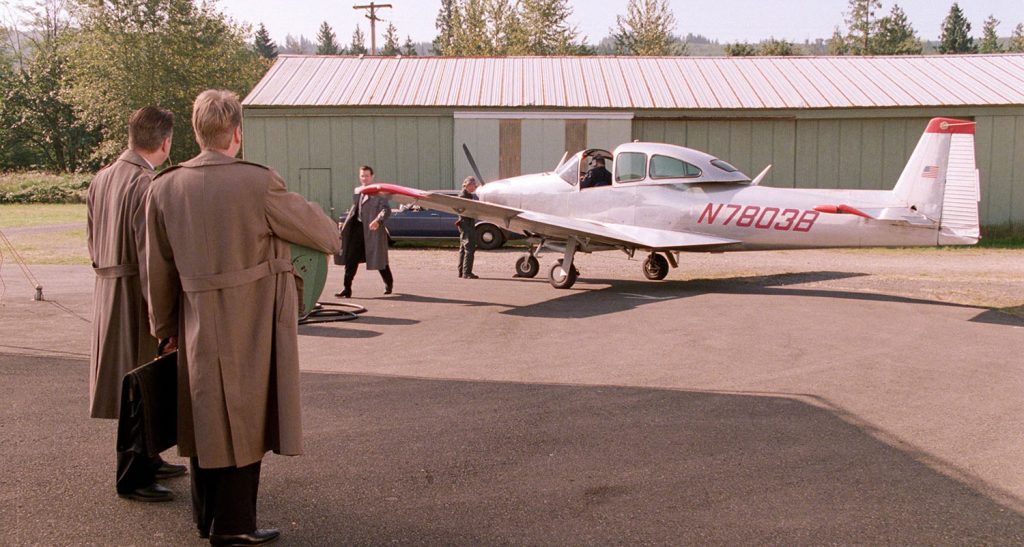
The back of the machine is seen as Agent Desmond approaches the two waiting FBI teammates at the airport.

The top of the machine with handle and Bubble Sextant view finder are seen when Agents Desmond and Stanley drive to Deer Meadow.
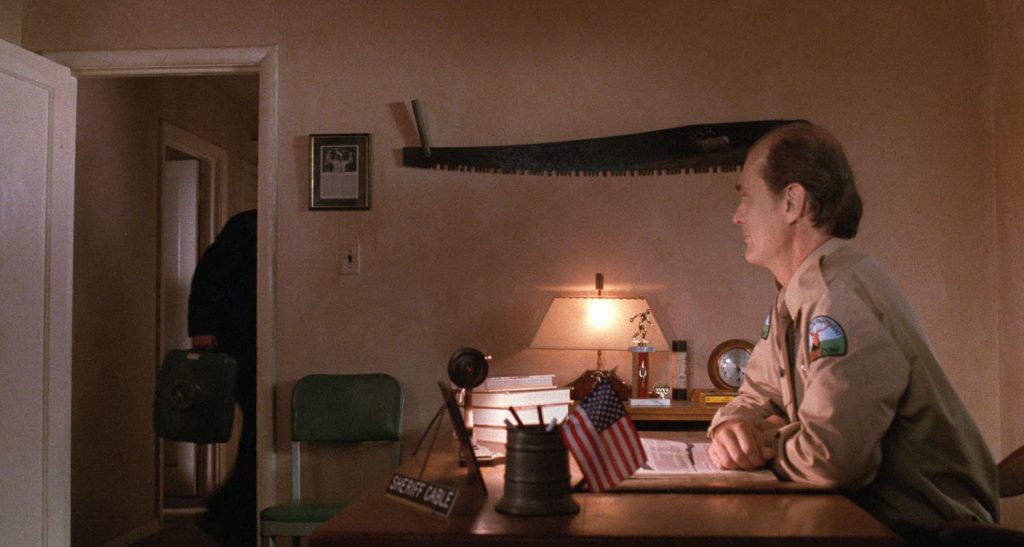
We catch a brief glimpse as Agent Stanley leaves the Deer Meadow Sheriff’s Department office.
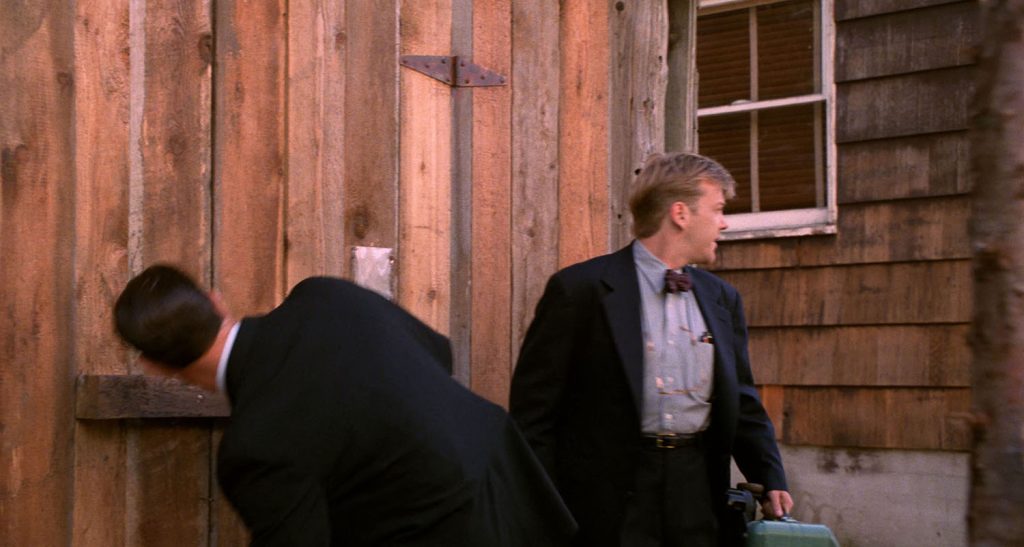
Another glimpse is seen when the two FBI Agents approach the wooden morgue behind the Sheriff’s station. Unlike the airport scene, Agent Stanley is carrying the the case versus wearing it across his chest.
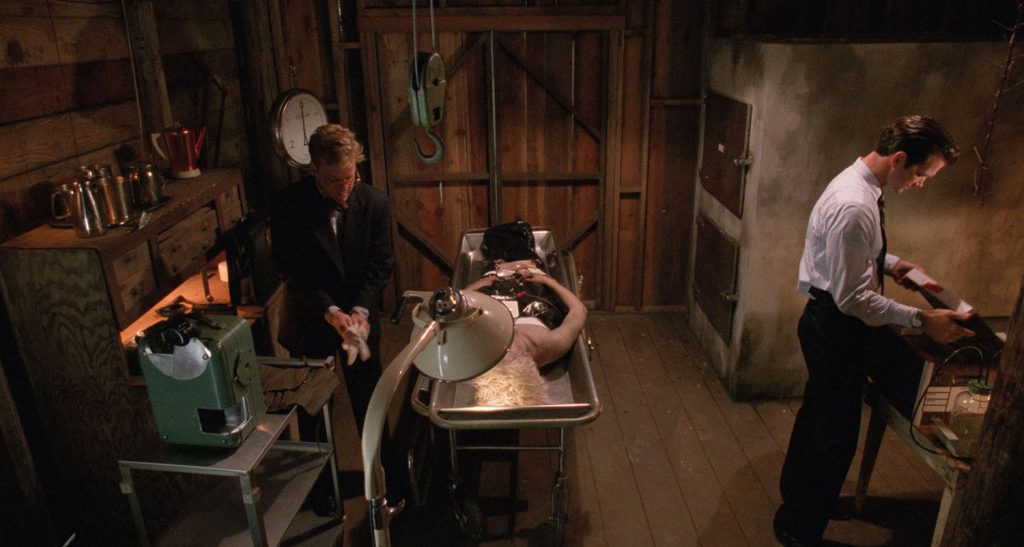
A wide angle view of the morgue shows the back of Agent Stanley’s machine.
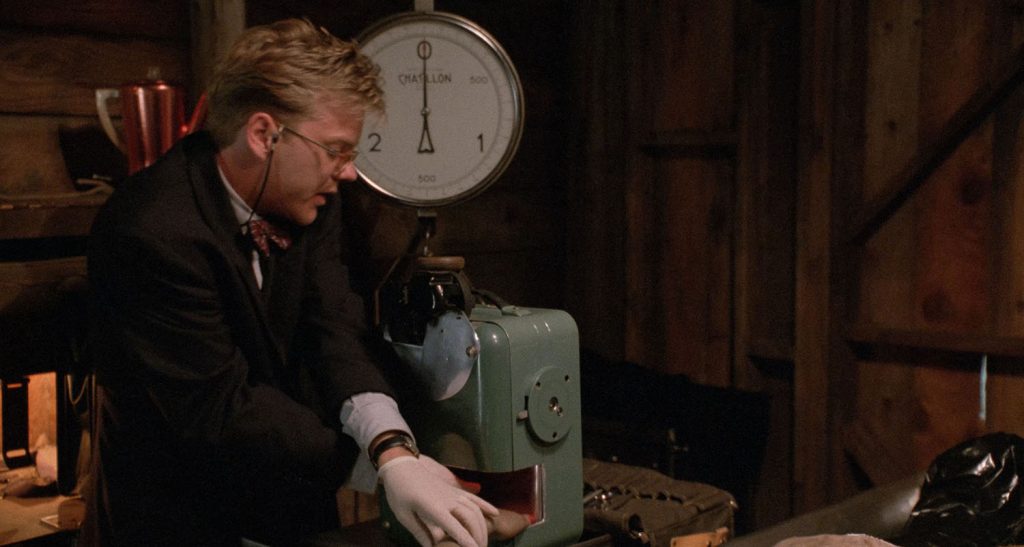
We get several detailed looks when Stanley examines Teresa Banks’ finger nails.
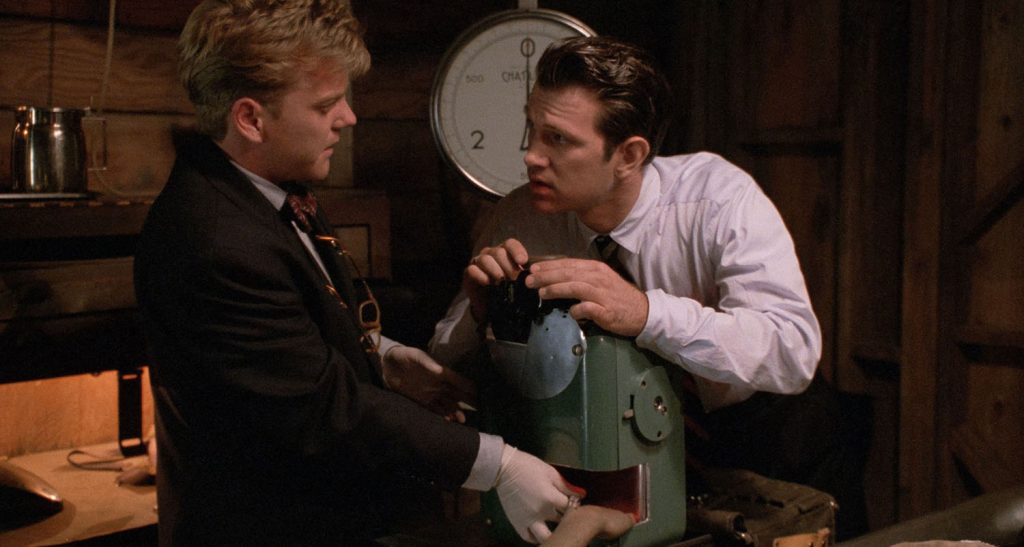
Even Special Agent Chet Desmond uses the machine to confirm what Agent Stanley found – the letter “T” found underneath Teresa Banks’ fingernail.
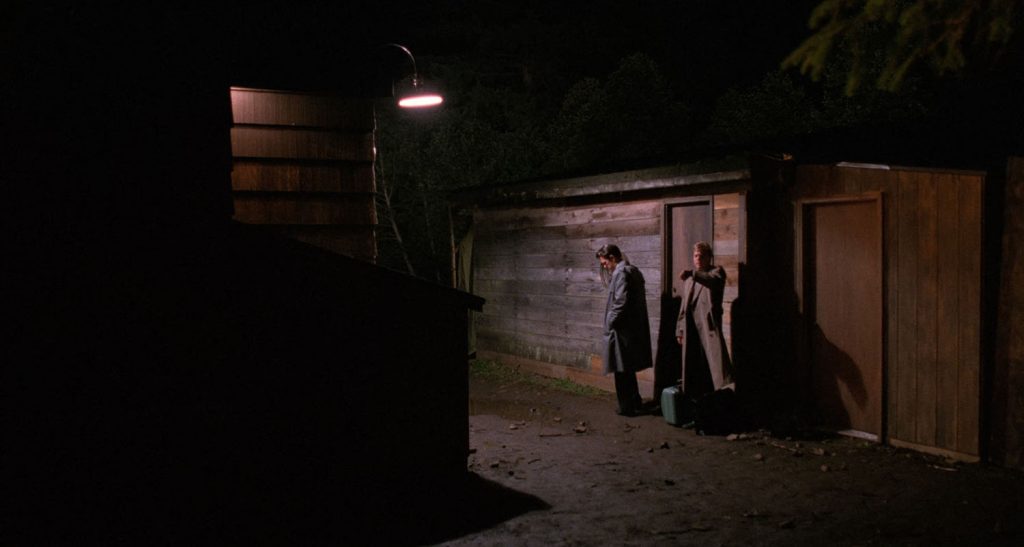
The final team we see the machine in the theatrical cut is around 3:00 in the morning as the FBI Agents are leaving the morgue.
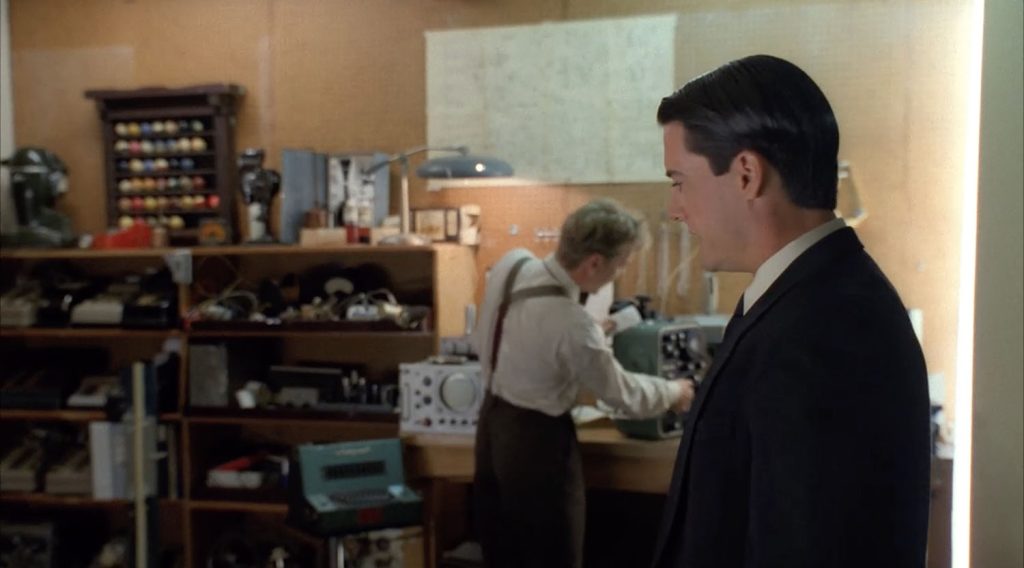
The Missing Pieces of Twin Peaks: Fire Walk With Me from 2014 contain one more scene with Agent Sam Stanley and his machine. He turns on the machine when Agent Dale Cooper pays him a visit.
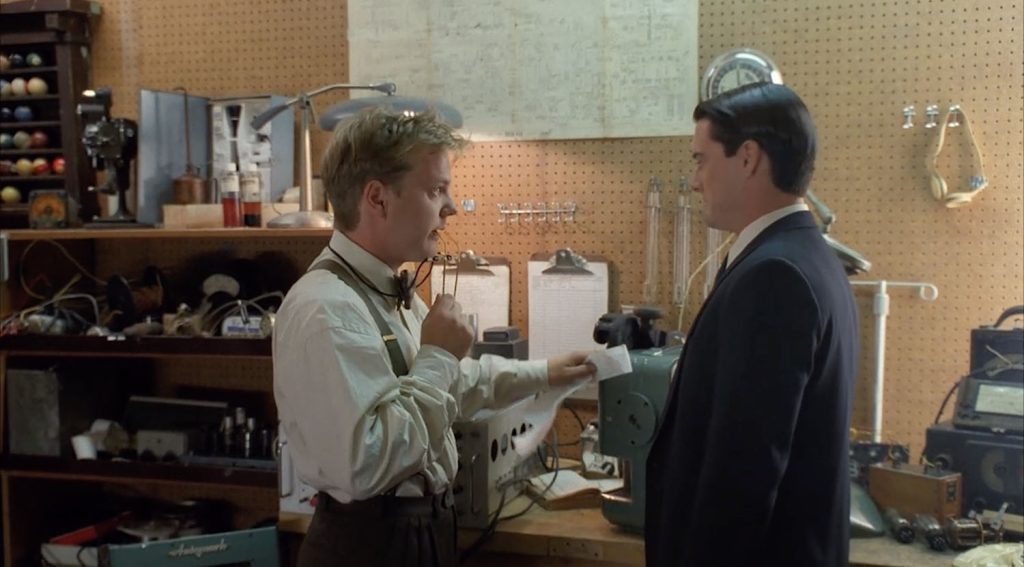
Cooper will also look in the Bubble Sextant view finder to confirm the piece of paper from underneath Teresa Banks’ nail.
We will never seen Sam Stanley and his machine again as Cooper instructs Diane to go to Special Agent Albert Rosenfield, not Sam, after finding a letter underneath Laura Palmer’s fingernail. I always hoped Sam would return to solve another crime with his unique and special machine.
For now, I’m just thrilled to share this item has been identified and cataloged on the Twin Peaks Props and Set Decorating page.
Thank you again to Matthew Haywood for providing the clues needed to solve the case. I’m grateful for your friendship and keen insights!
Discover more from TWIN PEAKS BLOG
Subscribe to get the latest posts sent to your email.

